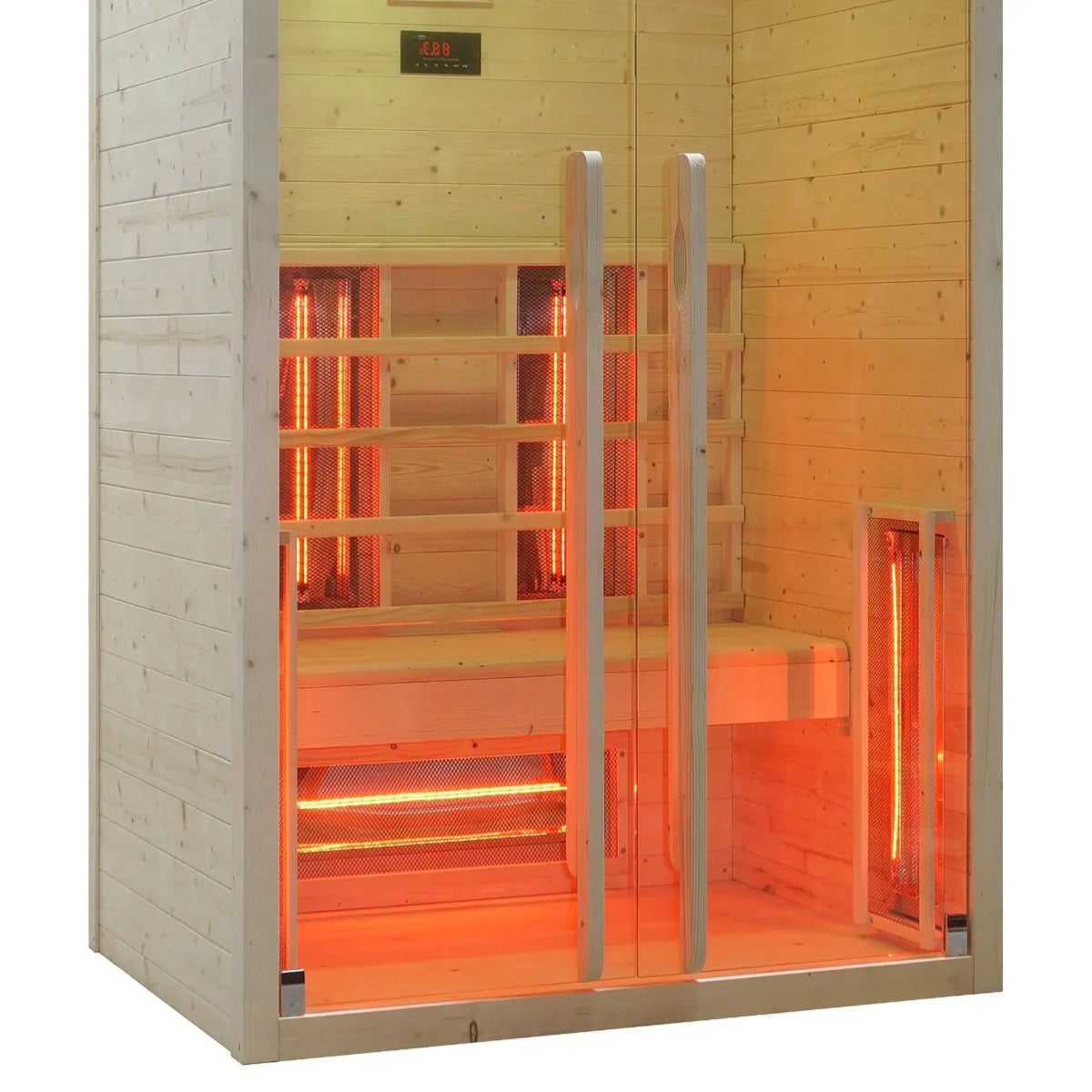I used to think glowing red lights belonged on UFOs—until Red Light Therapy turned my life around. Short answer? It improved my skin, sleep, and mood. Curious how Red Light Therapy Panels and Red Light Therapy Beds did it? Keep reading—because this glow-up was anything but ordinary.

Understanding Red Light Therapy: The Basics
What is Red Light Therapy (RLT)?
Red Light Therapy (RLT) is a non-invasive treatment that uses specific wavelengths of red and near-infrared (NIR) light to promote healing and cell regeneration. It’s painless, quick, and requires no recovery time.
Low-Level Light Therapy (LLLT) and Photobiomodulation (PBM)
LLLT and PBM are scientific terms often used interchangeably with RLT. They describe how low-intensity light stimulates cells, improving performance and reducing inflammation. This light doesn’t heat your skin—unlike lasers or tanning beds.
Red and Near-Infrared (NIR) Wavelengths
Red light typically uses wavelengths between 630–660 nm, while NIR light falls between 810–850 nm. Each penetrates skin to different depths, targeting surface-level issues and deeper tissues.
How it Works: Cellular Energy (ATP) and Mitochondrial Stimulation
Red light stimulates mitochondria—the energy factories of your cells—helping them produce more ATP. This extra energy allows your body to heal faster, reduce inflammation, and regenerate tissues more effectively.
A Brief History: From NASA to At-Home Devices
NASA first explored RLT for space-based plant growth and wound healing in astronauts. Now, Red Light Therapy Panels and even Red Light Therapy Beds are widely available for home use.
Is Red Light Therapy Safe?
FDA Clearance and General Safety
Many RLT devices are FDA-cleared for certain uses, including skin rejuvenation and pain relief. It’s generally considered safe when used properly.
Potential Mild and Temporary Side Effects
Side effects are rare but may include temporary redness, dryness, or eye strain. Always wear protective eyewear during facial treatments.
Contraindications and Precautions
People taking photosensitising medications or with conditions like lupus should consult a doctor. If you’re unsure, a quick chat with a dermatologist won’t hurt.
My Personal Journey: Discovering Red Light Therapy
The Problem I Was Facing
For years, I struggled with hormonal skin flare-ups, poor sleep, and tension headaches. No cream or lifestyle tweak made much difference. I wanted a non-invasive solution that fit into my routine.
My Introduction to Red Light Therapy
I came across RLT in a skincare forum while deep-diving late at night (classic). At first, it sounded too good to be true—but the number of success stories caught my eye. I decided to try Red Light Therapy at Home using a panel.
Choosing a Red Light Therapy Device or Professional Treatment
I compared clinic prices to at-home options and quickly opted for a mid-range Red Light Therapy Panel. It was cost-effective, easy to use, and let me multitask (yes, I’ve answered emails mid-session).
The Transformative Effects: How Red Light Therapy Changed My Life
Skin Rejuvenation and Anti-Aging
Within a few weeks, I noticed fewer breakouts and an improvement in skin tone. Fine lines began to soften, and redness around my nose calmed down significantly. My skin looked more balanced and less reactive.
Pain Relief and Muscle Recovery
Unexpectedly, my regular neck tension eased. After sessions, sore muscles felt lighter, especially post-gym. It became my go-to recovery tool.
Hair Growth and Scalp Health
I also used RLT on my scalp a few times a week. My hair started shedding less, and after about two months, it looked thicker overall. Friends even commented—always a win!
Improved Sleep Quality and Mood
Evenings with my red light panel helped me wind down. My sleep became deeper and more consistent. I woke up less groggy and more focused, likely thanks to better melatonin regulation and lower stress.
Tips for Getting the Most Out of Red Light Therapy

Consistency is Key: Establishing a Routine
Stick to it—5 times a week worked for me. Results didn’t appear overnight but became obvious after about 6 weeks. Set reminders or pair sessions with a habit like journaling or stretching.
Optimising Your Sessions
Clean your skin first. Keep the panel 6–12 inches from the target area. I found pairing it with a calming routine (like soft music) really helped.
Documenting Your Progress: Before & After
I took weekly photos in the same lighting. This helped me track subtle changes and stay motivated. Looking back, I was shocked at how much my skin improved.
Troubleshooting and When to Consult a Professional
If your skin feels dry or tight, reduce session time. If symptoms worsen, take a break and see a healthcare provider. Always prioritise your skin’s response over online trends.
Is Red Light Therapy Right for You? (Conclusion)
Red Light Therapy completely changed how I approach skincare, recovery, and wellness. It's easy to do, surprisingly versatile, and very beginner-friendly—especially with Red Light Therapy at Home.
If you’ve tried everything else with no success, it might just be your game-changer.
Takeaways
-
Red Light Therapy at Home is safe, convenient, and effective
-
Results take time but are worth the wait
-
It improved my skin, pain levels, mood, and sleep
-
Use a proper device and be consistent
-
Track your progress and tweak your routine as needed






